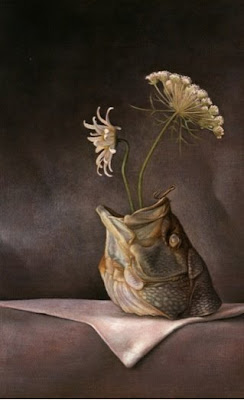



Some Information about James Guppy...
James Guppy is a contemporary Australian artist living in the small coastal town of Byron Bay in northern NSW. His medium of choice varies from painting to assemblage. His narratives use the traditions of western figurative painting to explore contemporary issues with a surreal and absurdist twist. These dramatic paintings and art works examine social issues through the lens of western art history. The paintings reference artists and traditions such as J.M. Turner, Piero della Francesca, Dutch Baroque painting and the Pre-Raphaelites. James Guppy is intent on examining our secret inner lives. His relentless gaze will fix on the domestic, love and power, the body and our physical identity, gender, sexuality and taboos. His art ranges widely across the private dreams and nightmares of life in the twenty first century. The artwork of James Guppy does not fit easily into the categories of western art. He is a figurative painter, a flower painter, a magic realist, but his paintings are postmodern and fetishistic. He is a surrealist and an absurdist, who deconstructs the traditions of western art to create intelligent engaging artwork that can haunt and transform the way we subsequently see the world around us.
MY thoughts on James Guppy...
James Guppy seems like strange person. His artworks are very impressive and I like his works. His meanings for his pieces, however, are a bit scary. His intentions are to make art that will stay with us and haunt us. I like his pieces but I dont feel this sensation. Guppy is very talented and challenges the society's views and expectations through art. His paintings are post-modern but he intends to embrace old meanings and motivations.






